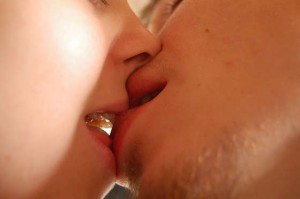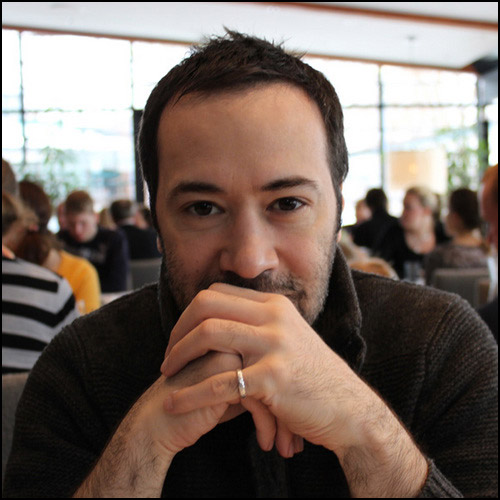The Intimate Secrets of the REAL French Kiss
 In the American psyche, the French kiss is something of a fantasy. Countless teenagers have had humid daydreams of (almost) prude kisses on the lips, which, fueled by passion and hormones, turn into the torrid abandon to the lust and indecency of… of… (I can’t believe I’m going to be so bold as to wright it in plain uncensored text)… of tongue contact!
In the American psyche, the French kiss is something of a fantasy. Countless teenagers have had humid daydreams of (almost) prude kisses on the lips, which, fueled by passion and hormones, turn into the torrid abandon to the lust and indecency of… of… (I can’t believe I’m going to be so bold as to wright it in plain uncensored text)… of tongue contact!
Well, I understand that there is nothing quite as intimate as sticking out your tongue to reach into someone’s mouth, but I’m not quite sure why my countrymen (and women) got the distinct honor of being forever associated with this deviant practice. Because unfortunately, this is a fallacy… As enjoyable as it is (and it is very enjoyable), we all know there is nothing exclusively French about this specific brand of face sucking. I’m fairly sure most people in the world came up with it on their own, and haven’t needed the help some distinguished world traveler to make the trip to the country of wine and cheese to bring back home the wonders of mouth exploration.
No, ladies and gents, the real French kiss is something quite different, and far more disturbing: it’s the everyday greeting performed by kissing someone on the cheek.
Horrifying, I know. French people kiss each other on the cheek every day. Men casually kissing women, women kissing each other, and sometimes two men are even caught pecking at each other’s face. Hard to fathom, but it happens every day. This practice, which regularly horrifies even the boldest of Japanese tourists, has been a hallmark of our culture for generations, and constitutes the true pinnacle of French depravity. It is such an integral part of our daily lives that we barely think about it, and launch head first into a lips powered hello that shames most self respecting native of foreign extraction.
It is a mystery indeed. And as all great mysteries, it demands studying and understanding. So I’ve decided to throw my two ethnological cents in, and try to explain the details of this strangest of practices, in three questions. But first, a bit of vocabulary. That “kiss-on-the-cheek” is called the “bise” in French (pronounced roughly like a shorter / harder sounding version of “bees”).
Ok, now we’re ready.
1) The important question: who to kiss?
Short answer: everyone is a potential bise recipient. Friends, family, people you’re meeting for the first time, men, women… It’s all fair game.
Long answer: it’s horribly complicated. It all depends on the region and the social circle you’re in, and the relationship you have with the person in front of you.
The easiest way to go about it is this: as a rule of thumb, girls kiss guys and girls, and guys kiss girls. Two guys will usually prefer a heterosexually affirming handshake-with-a-smile, but as I said it is not uncommon for them to also “faire la bise”. This will happen mainly if they are close and intimate friends, or they are shallow and annoying fashion people.
Seriously though, it is very difficult to know which guys to kiss when you’re a guy. Even I do it with some of my closest friends, but not with some of my other equally close friends. No real reason, just a force of habit. If you’re unsure, just follow the rule of thumb detailed earlier and you’ll be safe: girls kiss everyone, guys kiss girls.
2) The truly important question: how to perform the kiss?
Now that is an interesting one. I’m sure a few of you at least are imagining some sort of hot and steamy kiss festival taking place every morning in every office building in the country, as coworkers greet each other lustfully when they get in to work. Get your filthy collective mind off the gutter, sirs and madams, we are not that kind of people… that early in the day!
Seriously though, there is nothing sexual about the bise. It is really just a greeting, as hot and steamy as shaking someone’s hand (which can be quite hot and steamy in its own way, although that is unlikely to be sexually arousing). I’m sure some New Yorkers or Italians know what I’m talking about: it’s like saying hello, nothing more. The question is though, how do you do it exactly? Should cheeks touch? Should the lips actually come in contact with the skin? Do you stay three respectful centimeters away and make a deafening “smacking” sound?
Well, the French bise is a healthy mix of all of that: cheeks touch, lips sometimes lightly touch the cheek, and the sound is a respectful natural “kiss in the air”. Do anything else and it’ll seem odd. If you don’t touch cheeks and people might think you’re afraid they are contagious (sometimes, they are). If you kiss the cheeks too openly and it might seem a bit forward and make people uncomfortable (with the notable exception of the “One Kiss” detailed below). And if you suck a gigantic “smack” too close to the ear because you were afraid of a little of physical cheek contact, you’ll render someone partly deaf and they will start disliking you, which isn’t great. As in most other areas, practice makes perfect…
3) The really super important question: how many kisses does the ritual include?
That one is 80% local customs, 20% social circle. Basically, if you’re from the sticks (not Paris), four is standard. Parisian suburbs will go to three, and proper people (Parisians) will stop at two. If you couldn’t tell, I’m a Parisian.
This might seem like a detail, but it is probably the most important aspect of all, as it will determine your social standing in an instant. Kiss someone twice in some remote town in the south, and you will be branded an uptight Parisian ass. Go for a third kiss at a house party in Paris, and forever be known as the uneducated hoodlum who knows nothing of proper society. And of course, if you go for a fourth kiss in a suburban club, they will laugh at the simple boy who just got off the train from cow country.
It is important to note however that there are two outliers in the “number of kisses” category: fashion, and the “One Kiss”.
Fashion is a special kind of Parisians that will do four kisses. As I said, they are shallow and waste valuable time kissing twice as much. We hate them.
One kiss is the opposite: if you have a very very close friend of the opposite sex, you can do the One Kiss. This is a perfect case of “less is more”, and you should be careful in how you wield this powerful weapon (that’s what she said, hehe). Indeed, stopping short of the second “standard practice” kiss will carry heavy meaning.
It says: “I know you so well, we have shared so many intimate moments, I consider you a very special person. We don’t need two kisses, that’s for those losers over there that we don’t really care about as much. We put more in that one kiss than we do in two others, and we know it. Oh, and there, I’ll also throw in a mini hug-like gesture and a sincere smile with that kiss, along with a deep understanding look right into your eyes, because I do genuinely care about you“. Just so you get an idea of what would create the conditions for the One Kiss status, here are a few examples:
– Two hour phone conversations in the middle of the night.
– Having helped them through a tough breakup, but not having taken advantage of it.
– Making out in a club, half drunk, then going for a kebab at 4 in the morning.
– Sex as a one time thing, but it didn’t quite work out. Ok, maybe two times, just to make sure.
You get the idea. Basically, the One Kiss is half way between “friends” and “in a relationship”, but it usually does not go past that point. It’s also different from the “best friend” status, as it usually involves a heterosexual girl and a heterosexual guy; they could be lovers, but they’re not. We’re still very much in friendship territory, just a stronger brand of it. And yes, with a healthy side of innocent flirtation.
Ok, I guess that’s it! I hope you enjoyed this little crash course in “faire la bise”, and please do let me know if you’ve had traumatizing (or enjoyable!) experience with that fascinating French practice. Or how it works in your country, I know we’re not the only ones doing it.
Oh, and I almost forgot: have a lovely Christmas and a fantastic new year everyone, and hugs to all, wherever and whoever you are! (That’s not a French thing, it’s just a Patrick thing. 🙂

